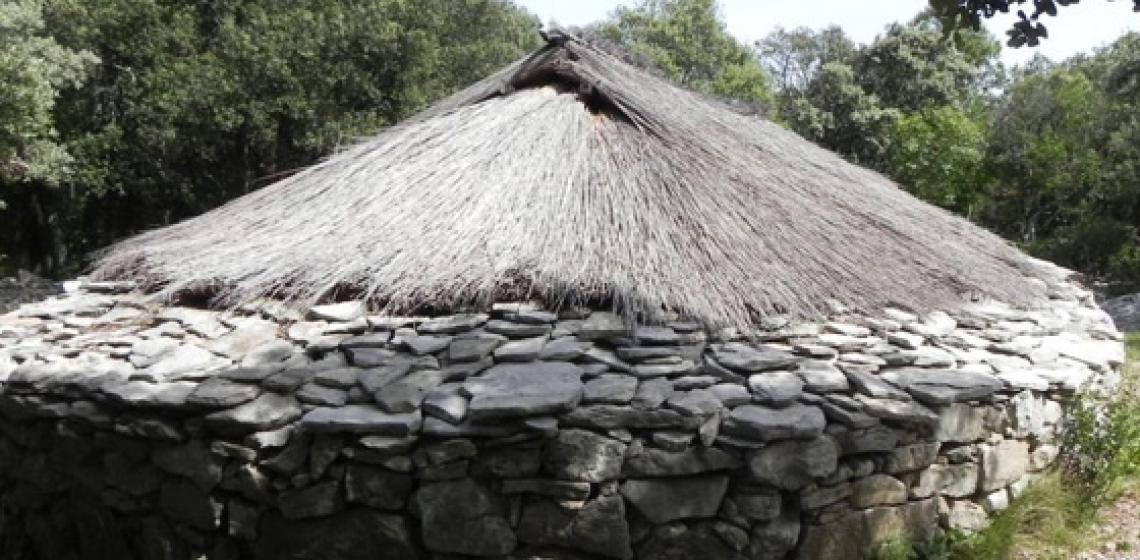
At Cambous, the Societé Languedocienne de Préhistoire manages a reconstructed Chalcolithic house with stone walls and stone roof. At this site, discovered in 1967, large excavations took place, uncovering Neolithic and Chalcolithic dwellings in what is called one of the oldest villages of France.
About one third of the village is uncovered now. Regularly there is living history at the site, the reconstructed house is next to the original site which can also be visited.
Building does not pose problems in areas of the Garrigues, the material is limestone in abundance.
The technique of dry wall is simple and fast. The house was built under the supervision of archaeologists and specialists in the construction of dry stones.
The stones are not binding, stacked and blocked by their own weight. The heigth walls should not exceed the size of an adult. The roofs of larger houses were made of plants. Sometimes, a mesh of branches coated with clay supported coverage of flat stones (the slate). The shape of the house is typical of the architecture of the Herault. Entries open in the long axis away from prevailing winds.
The larger houses are elongated and have small rounded sides (in apse). Contiguous to each other, they form a kind of farms or hamlets. Cambous covers about one hectare and has four villages, only two of them are on public display. The village was occupied for a long time, as evidenced by the numerous repairs and architectural transformations. Nobody knows exactly what these houses looked like. Only the walls are preserved and the roof has disappeared. At Cambous, one believes it was composed of plants. Generally, archaeologists prefer steepest roofs when reconstruct the homes of our ancestors. Here, a different view of things is proposed. On visit of the site, the guide explains that the mats are semi industrial roofing. In addition, a waterproof fabric is sandwiched between two layers of mats to seal. The frame is assembled with nails. The strings evoke the links used in the Neolithic. The central beam is chestnut, a tree that is not attested in the south of France at that time. Other woods belong to species inhabiting the area. They did not cut or disbarked trees with stone axes or flint, but with iron tools. In contrast, the walls are built of dry stone, without using cement or binder of any kind. Some stones have been glued with mortar in places where many visitors spend to prevent they get injured. Regarding the low slope of the roof, it has lasted twenty years before showing signs of weakness, only because the central beam collapsed. To be convinced of its strength despite its low slope, it would test a structure built without nails and a cover similar to that of existing houses roofed with thatch or boughs. The height of the walls is estimated from the limits of resistance of the dry stone masonry to the thrust of the rafters bearing on the top of the walls. Higher walls, say 1.80 m, would have long supported this thrust with 1.30 m on average, they held well since 1984. We are often asked this question. It is estimated that the Neolithic men were about 1, 50-1, 60 m and women a bit shorter, but there were large individuals. The height of doors has nothing to do with the size of the population. It is related to the height of the walls. The occupants had to stoop to enter and exit homes.
